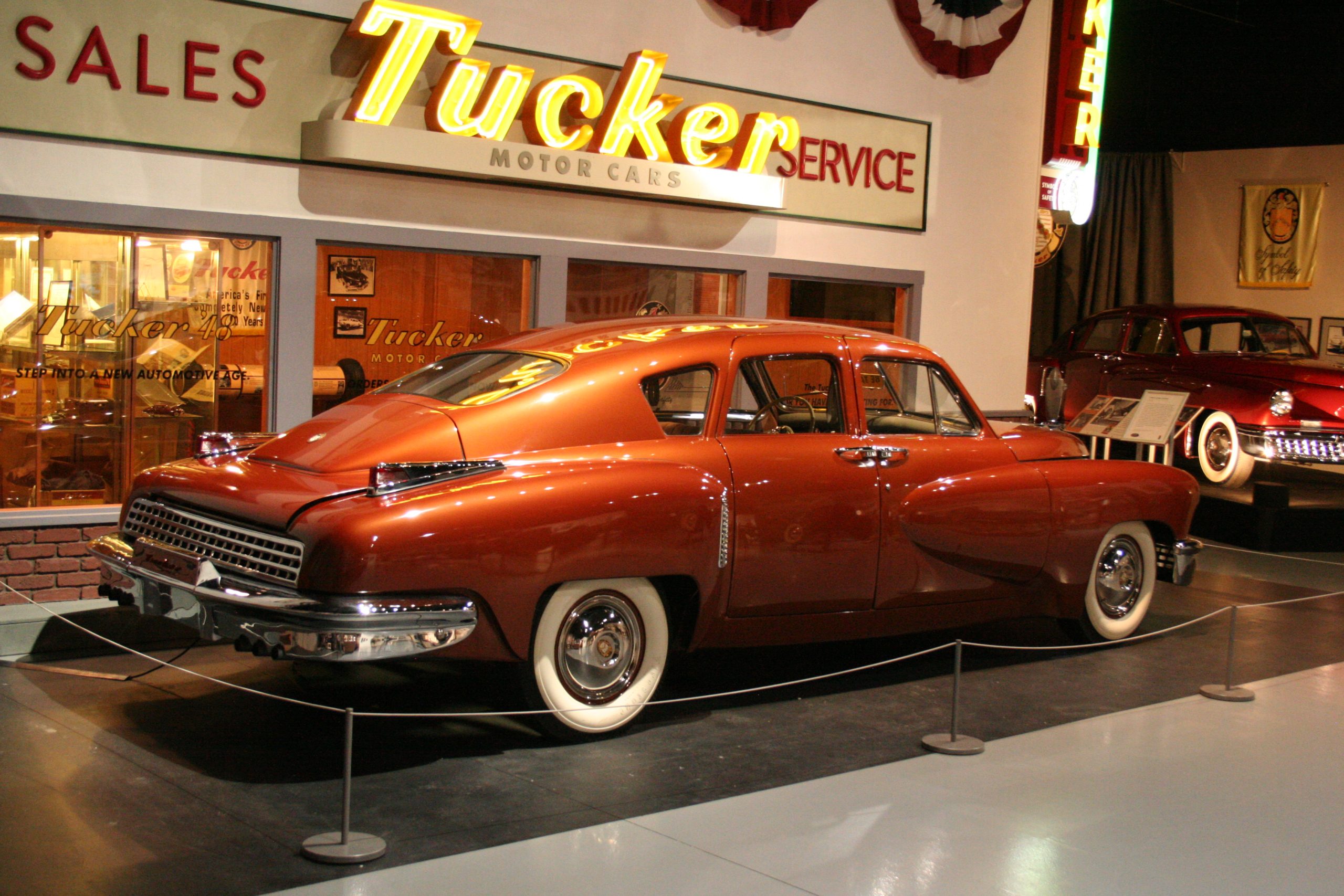The Tuckermatic, Part 1
The Tuckermatic, Part 1
By Mark Lieberman
Editor’s note: This article is the first in a multi-part series documenting the endeavor to “revive and drive” Tucker #1026 in time for participation in the Pebble Beach Concours d’Elegance.
Marked by unprecedented milestones, 2018 added a memorable chapter in Tucker’s iconic history. Of note were the 70th anniversary of the Tucker ’48, the 30th anniversary of the movie “Tucker: The Man and His Dream,” the first time the Tucker automobile received an invitation for showing at the prestigious Pebble Beach Concours d’Elegance and, the first time in several decades that Tucker #1026 was driven under its own power.
Tucker #1026, displayed in the AACA Museum, Inc.’s Cammack Gallery, is one of three Tucker ‘48s anchoring the world’s most extensive Tucker collection. Along with the vehicles, the exhibit includes Tucker artifacts, documents, blueprints, factory correspondence, promotional items and, literature documenting the Tucker story.
During the brief production run of 50 Tucker ‘48s, only two carried the automatic “Tuckermatic” transmission. Tucker #1026 was the first to receive the innovation, followed by #1042. Tucker #1042 was destroyed many years ago, and its engine and Tuckermatic transmission are on display in the Cammack Gallery. Tucker #1026 remains as the only example equipped with Tucker’s unusual, shift-less automatic transmission. It was one of the seven cars tested at the Indianapolis Motor Speedway and shown in Tucker promotional film footage. Following the closure of the corporation, the #1026 was sold at the liquidation auction, and Nick Jenin eventually purchased it. The car became part of his “Fabulous Tuckers” traveling show. Nick painted the car orange to freshen its appearance, and it quickly gained favor among spectators.
In addition to the transmission, several features made #1026 different from the other ‘48s. These features included unique door handles (both interior and exterior), garnish moldings, shift lever, pedal configuration, interior door padding, and upholstery. Tucker #1026 was indeed a unique car.
By 1974, #1026 had fallen into disrepair. For eight years, it sat in a Quonset hut at the Michigan State Fairgrounds in Detroit, Michigan. It was the last car remaining in the Jenin collection. The Factory Test Chassis sat nearby in an equal state of disrepair. David Cammack sought to purchase an additional Tucker and saw Nick Jenin sell off his collection. The last of the Jenin cars, exhibition van and parts were in a complicated situation. Jenin possessed title to them, but the Michigan State Fair was owed monies for their storage. The time was right, and a deal was struck satisfying all of the interested parties. David purchased the Test Chassis, #1026, the traveling display van and, its contents of parts. The purchase proved to be a great event in Tucker history because he effectively saved both Tucker vehicles from probable destruction.
David sent #1026 to Stan Gilliland to begin its refurbishment. Stan replaced the broken glass and re-upholstered the interior. Then the vehicle was returned to David, and he hired a body man from White Post Restorations to paint the car its current copper color. The car was ready to take its prominent place in David’s collection. There it would sit untouched and undisturbed for the next 40 years.
Fast forward to 2018. Ken Gross, appointed as the director and chief judge of the Tucker class at the Pebble Beach Concours d’Elegance, invited Tucker #1026 and the Test Chassis to be displayed as part of the 2018 class. Bill Cammack, on behalf of the Cammack Family, graciously agreed to allow the cars to participate. Furthermore, they generously agreed to sponsor the effort to revive #1026 and get it running, driving and operating as it once did 70 years ago.
John Tucker and I set out early one morning with my truck and trailer to collect #1026 and begin the car’s awakening process. Joined by Sean, Mike and Ty Tucker, Jeff Bliemister and a photographer from Motorhouse Media, it was fascinating to load the historic car. We brought it to my shop in Auburn Hills, Michigan where my team and I would revive and refresh the operational systems. Excitement built as we recognized reality. We were about to “Revive and Drive the Tuckermatic!”
Upon arrival at my shop, we unloaded the car and placed it in its predetermined location. Set in good company, it joined Tucker #1029 and #1046 already on display. I knew what lay ahead since I’ve been down this road many times before. The big mystery was the Tuckermatic transmission. Would it still operate? How does it work? What is the correct fluid to use? Do I really need to turn the engine off to change direction? Lots of questions remained, and much research required. I thought, “Where is Warren Rice when you need him?”
We began with a thorough inspection of all systems; we went through the list: brakes, fuel system, electrical, cooling, engine, transmission, suspension, etc. Everything was in a state of suspended animation. We drained the fluids and evaluated the contents for volume and condition. The good news: we found nothing unexpected. The bad news: four gallons of “dinosaur juice” congealed the fuel tank. The liquid ceased to be gasoline long ago and morphed into gelatinous goo and a corrosive crystalline substance. We tried a variety of solvents to break it up and allow it to drain. Unfortunately, it became evident that we were wasting valuable time and the fuel tank was going to have to come out. Removing the tank posed several challenges. Tucker #1026 was the first “front tank” car. Tucker decided to improve weight distribution by relocating the fuel tank from under the rear seat to beneath the luggage tub. With this change, the fuel filler neck, formerly located behind the driver’s side rear quarter vent grill, moved to the front driver’s fender. #1026 was the first to have this change, and some of the fixtures used, along with the dimensions of the space allocated, were not fully dialed in yet. To extract the fuel tank, we must remove the entire front clip. Yikes!




